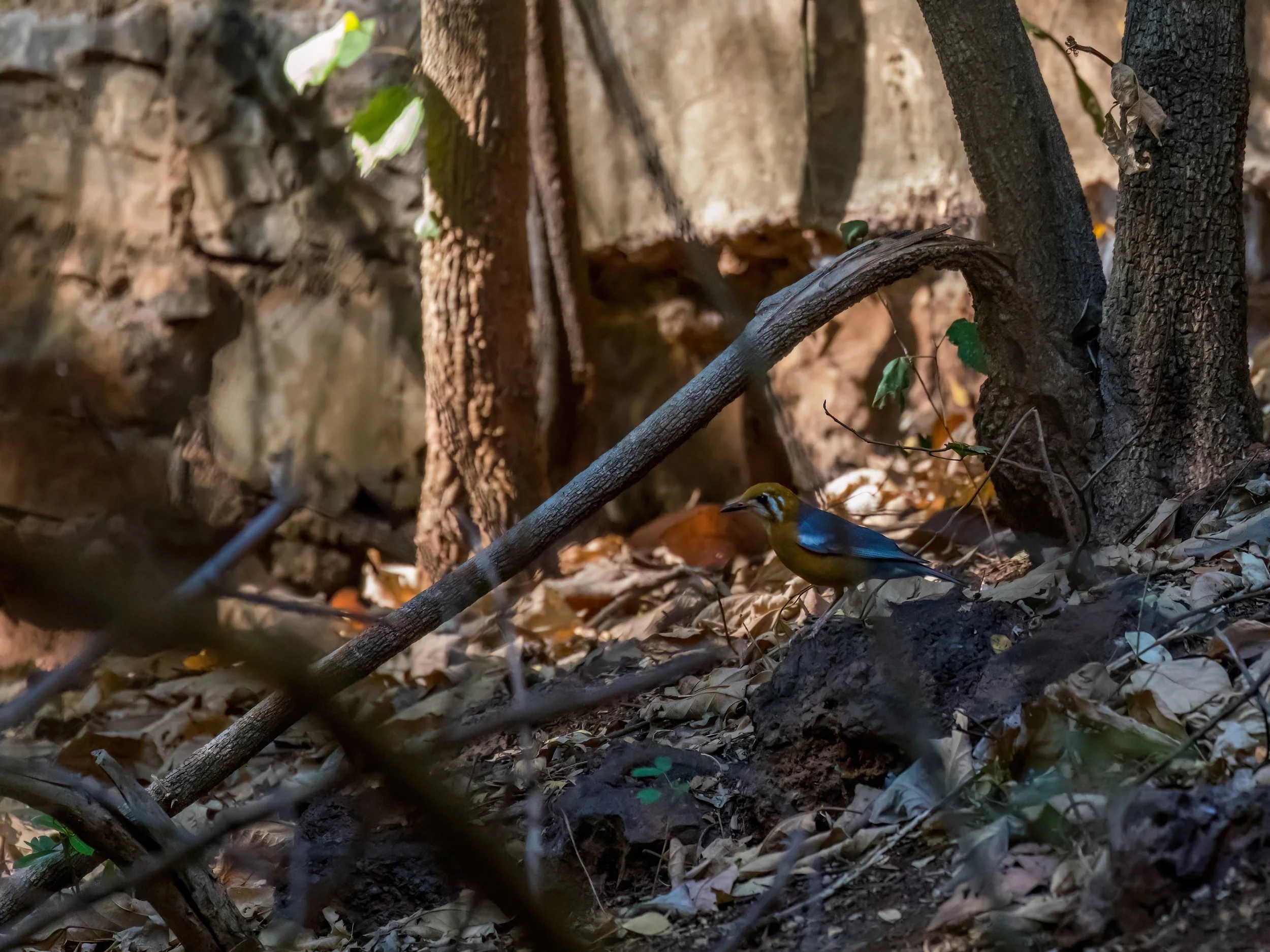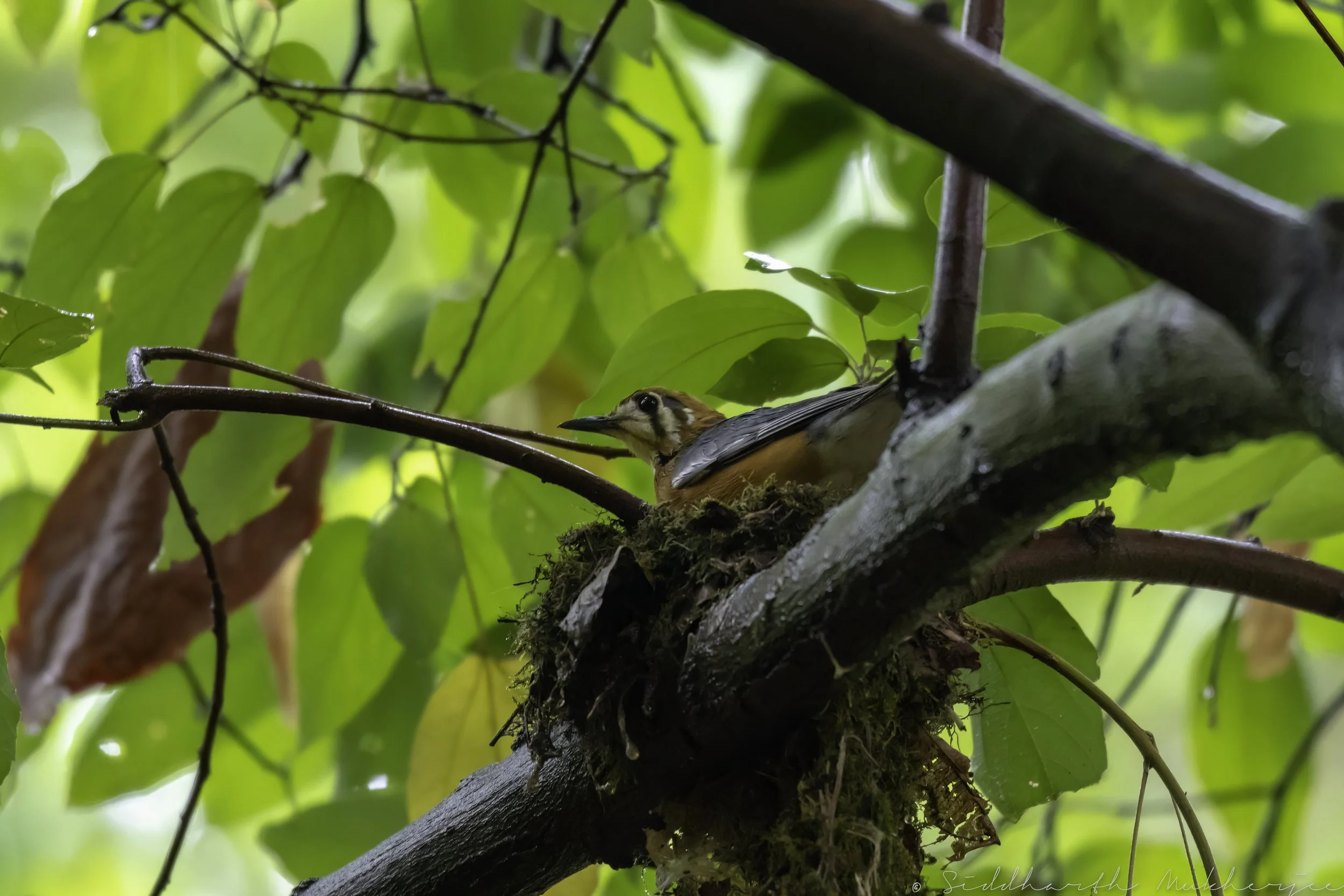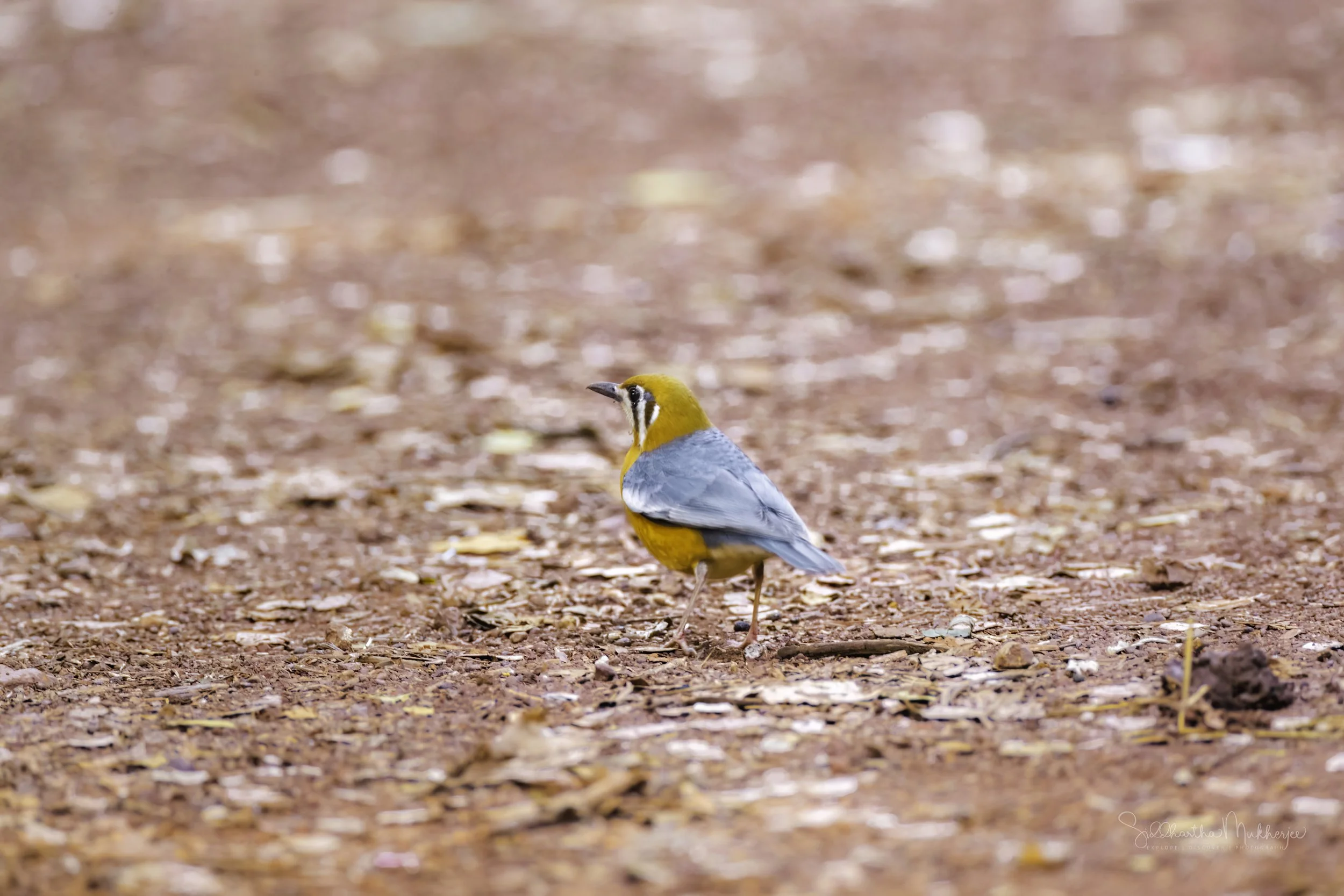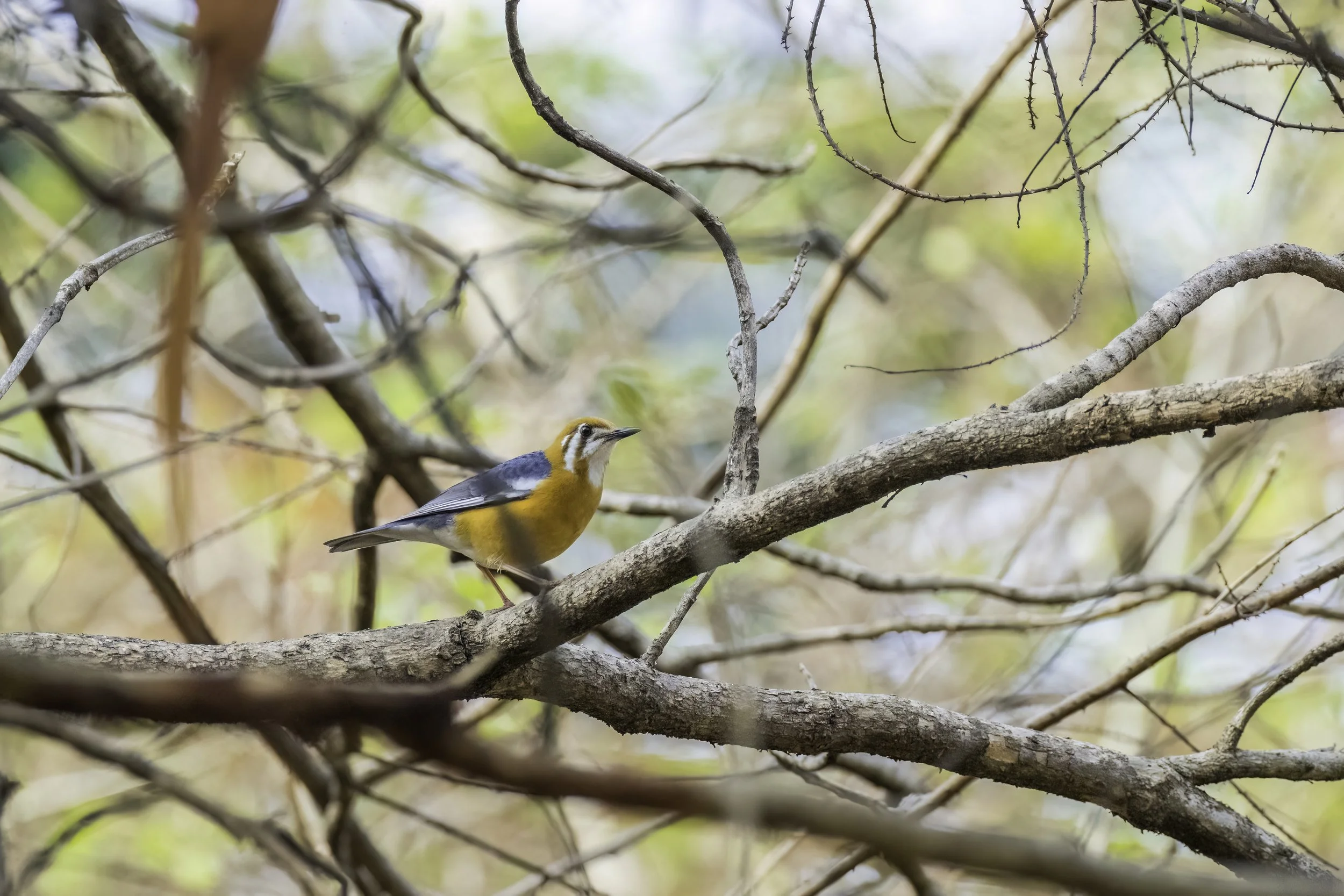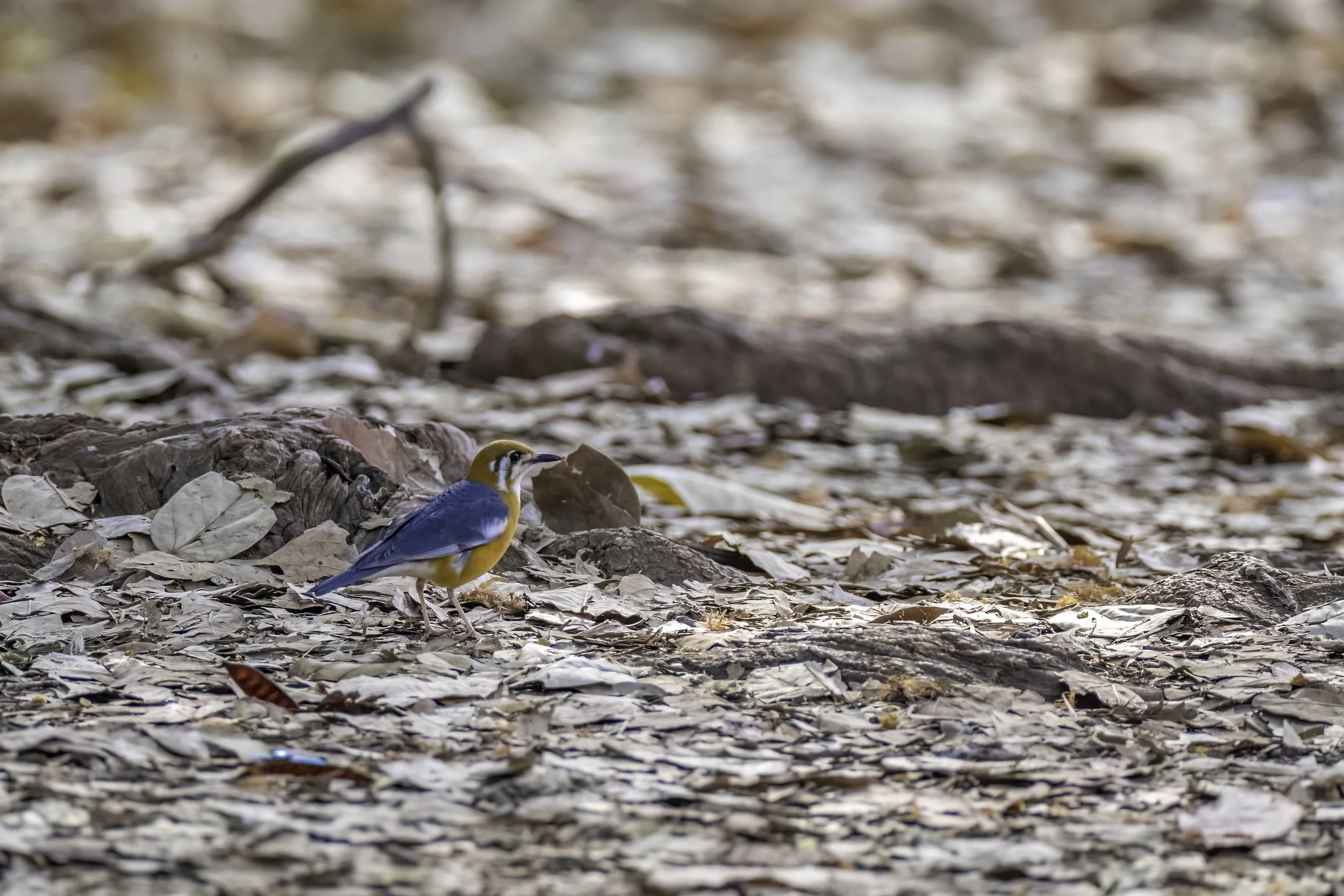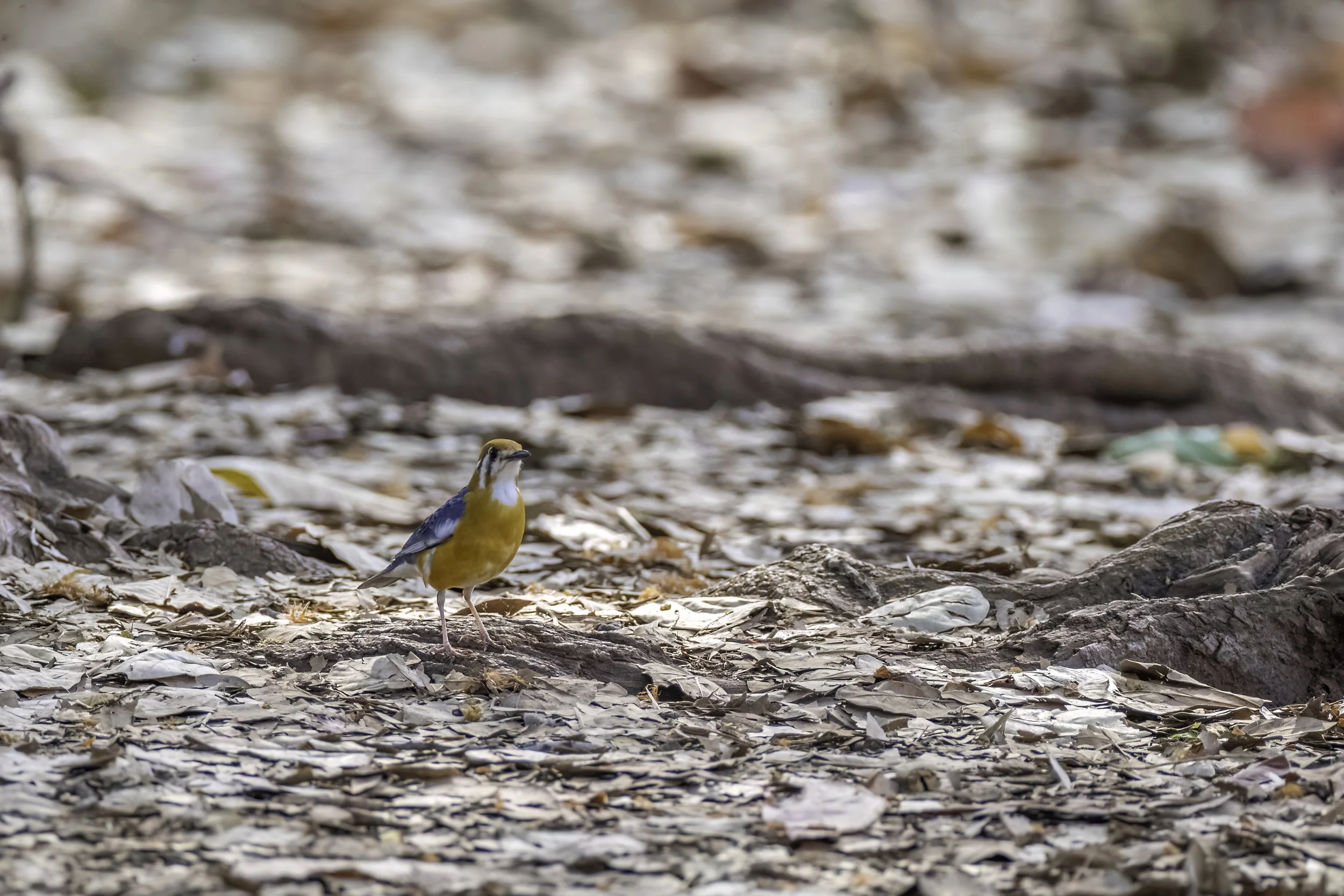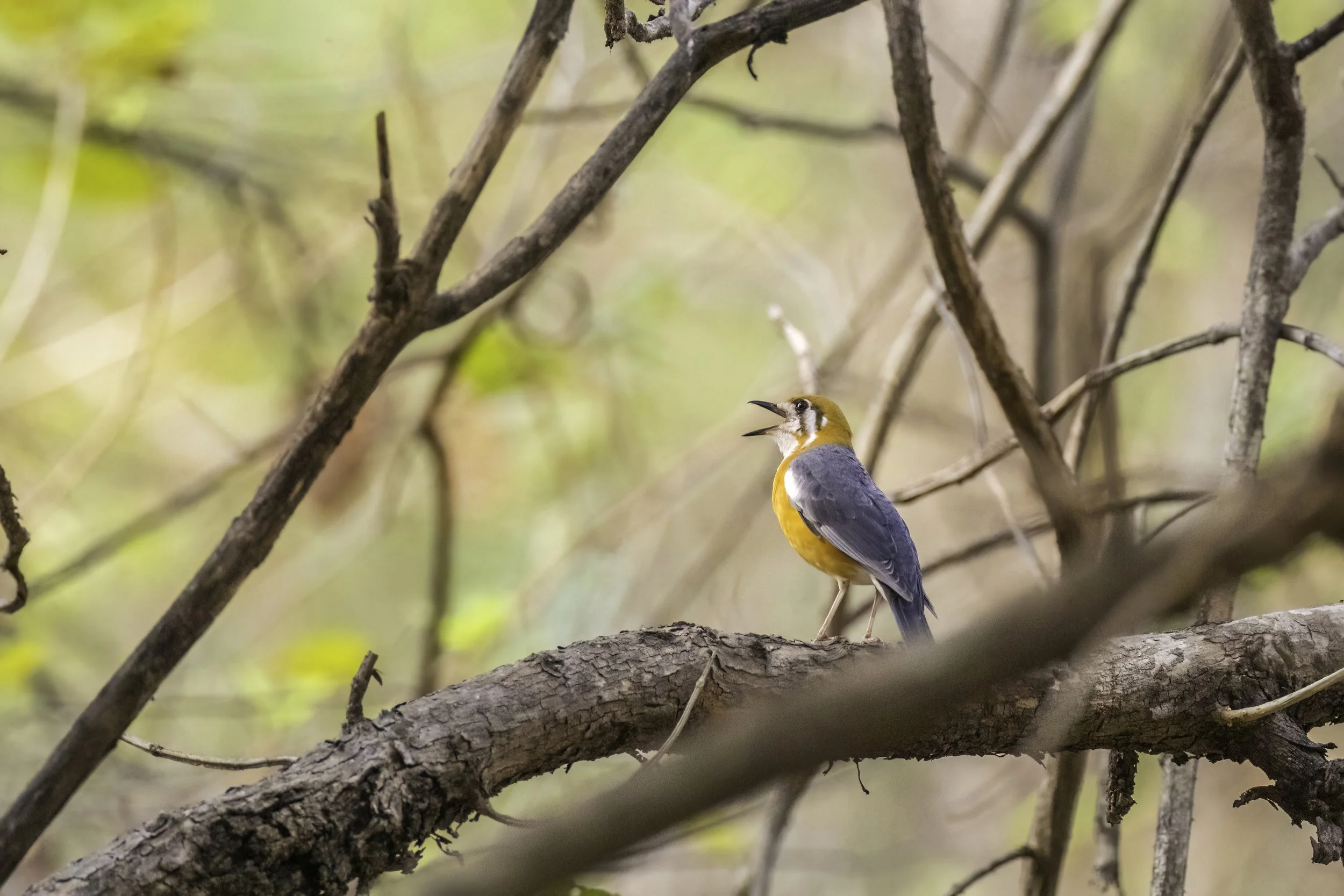Orange-headed Thrush
Geokichla citrina
Ananthagiri Forest Range, Vikarabad
Another week of exploring deep within the Ananthagiri Forest Range and this time it is the beautiful Orange-headed Thrush. It is a brightly coloured ground-dwelling bird of the thrush family with an unmistakably bright orange head, breast, and belly. Some subspecies have two broad black crescents on the sides of the face and they are often seen hopping about foraging in the leaf litter in forested areas, often in wet gullies and ravines. They have a beautiful song composed of well-spaced strophes of warbling and buzzy notes.
Now on to these beautiful the forests of Telangana. Located in the central stretch of the Deccan Plateau, Telangana has sub-tropical climate and the terrain consists mostly of hills, mountain ranges, and thick dense forests covering an area of 27,292 km2 (10,538 sq mi). The annual rainfall ranges between 1,100 mm to 1,200 mm and the annual temperature varies from 15 C to 45 C. The State is drained by a number of rivers which include Godavari and Krishna.
Telangana is endowed with rich diversity of flora and fauna. It has dense teak forests on the northern part along the banks of river Godavari. As per the Champion & Seth Classification of Forest Types (1968), the forests in Telangana belong to three Forest Type groups, which are further divided into 12 Forest Types. The State Government has taken up a massive greening programme, 'Telangana Ku Harita Haram' in the State to plant and protect 230 crore seedlings over a period of 4 years. This initiative aims at achieving the twin objectives of increasing the forest cover and reduce pressure on the existing forest resources, through massive community participation by Vana Samrakshna Samithis (VSS) and Eco-Development Committees (EDCs) in Protected Areas and Watershed Development Committees in the Watershed areas. Recorded Forest Area (RFA) in the State is 26,904 sq km of which 20,353 sq km is Reserved Forest, 5,939 sq km is Protected Forest and 612 sq km is Unclassed Forests. In Telangana, during the period 1st January 2015 to 5th February 2019, a total of 9,420 hectares of forest land was diverted for non-forestry purposes under the Forest Conservation Act, 1980 (MoEF & CC, 2019). As per the information received from the State during that last two years, 12,730 ha of plantations including avenue plantations in the State.
Three National Parks and nine Wildlife Sanctuaries constitute the Protected Area network of the State covering 5.08% of its geographical area and our focus area today is the northern fringe of the Nallamalla forest located both in Telangana and Andhra Pradesh. It is part of the Eastern Ghats. The Nagarjunsagar-Srisailam Tiger Reserve, the largest tiger reserve in India spread over the five districts of Kurnool, Prakasam, Guntur, Nalgonda and Mahabub Nagar falls in its precincts.
Ananthagiri Forest Range
Ananthagiri Hills is located in the Vikarabad district of Telangana. It is one of two major reserve forest blocks of the Vikarabad Forest Range the other one being the Damagundam Forest Reserve and each of these forest blocks is spread over a 10 square kilometre area. While the limits of Damagundam begin from Manneguda, a small town about 60 kms from Hyderabad, Ananthagiri block begins where the limits of Vikarabad end near the railway tracks. The Ananthagiri hills and their dense forests host many wild species like the Nilgai, Sambhar, Black Buck, Chital, Chowsingha, Chinkara, Wild Goats and many more. The streams from these hills flows into Osman Sagar, also known as the Gandipet lake, and Himayath Sagar. It is one of the denser forests in Telangana and is the birthplace (about 5 kilometers from the town of Vikarabad) of the Musi river, also known as the Muchkunda River, which flows through the capital city, Hyderabad. The Musi River after originating in these Ananthagiri Hills, about 90 kilometers to the west of Hyderabad and flowing due east for almost all of its course joins the Krishna River at Wadapally in the Nalgonda district after covering a total distance of about 240 km. Also in these forests is the Sri Anantha Padmanabha Swamy Temple, a Hindu temple dedicated to the Lord Vishnu.
According to the Skanda Purana it is believed this temple was installed by Rishi Markandeya in the Dvapara Yuga. Attracted by the peaceful atmosphere of the Ananthagiri Hills Rishi Markandeya came here for yoga sadhana. It is believed that the Rishi, on the strength of his spiritual powers, would visit Kasi daily for a bath in the sacred Ganges through a cave. One day he was not able to visit Kasi because the Dwadasi was in the early hours of the morning. Because of this miss the Lord Vishnu appeared, gave Darshan, in a dream and arranged for the Ganges to flow so the Rishi could take his bath daily without having to travel.
About 400 years back the Nizams of Hyderabad used these forests as their hunting grounds. It is said that the lord Vishnu in the form of Sri Anantha Padmanabha Swamy appeared in a dream and asked the then Nizam, Mir Osman Ali Khan, to build a temple for him. About 20 kilometers from the temple lies the Nagasamudram Lake or Kotipally Reservoir, a masonry dam.
It is one of the earliest habitat areas with ancient caves, medieval fort structures and temples that illustrate the antiquity of this area.
I love these forests as they are home to innumerable bird species, some of which I have photographed and many more which I am yet to photograph. I only hope the so called “bird and nature lovers” who come here to photograph and achieve social media fame adhere to ethical birding practices and refrain from using calls, especially owl calls, and bait. Over the years I have seen the behaviour of the wildlife change in these forests. Birds like this nightjar were easily visible without having to venture deep into the dense brush but now the overload of wildlife enthusiasts has pushed these birds deep into the undergrowth. I think, in a way, it is good for the birds because it requires time and patience to slowly approach them which the modern bird lover/ photographer lacks.
Read about the other lovely species I have photographed in the Ananthagiri Forests.
Orange-headed Thrush
The Orange-headed Thrush (Geokichla citrina) is a resident bird in the thrush family common in well-wooded areas of the Indian Subcontinent and Southeast Asia. The species shows a preference for shady damp areas, and like many Geokichla and Zoothera thrushes, can be quite secretive. The orange-headed thrush is omnivorous, eating a wide range of insects, earthworms and fruit. It nests in trees but does not form flocks. The male of this small thrush has uniform grey upperparts, and an orange head and underparts. The females and young birds have browner upper parts.
The orange-headed thrush is 20.5–23.5 cms long and weighs between 47–60 grams. The adult male of the nominate subspecies of this small thrush has an entirely orange head and underparts, uniformly grey upperparts and wings, and white median and undertail coverts. It has a slate-coloured bill and the legs and feet have brown fronts and pink or yellowish rears. The female resembles the male but has browner or more olive upperparts and warm brown wings, but some old females are almost identical to the male. The juvenile is a dull brown with buff streaks on its back, and a rufous tone to the head and face; it has grey wings. The bill is brownish horn, and the legs and feet are brown.
This species' orange and grey plumage is very distinctive, and it is unlikely to be confused with any other species. Differences between the subspecies can be quite striking, as with the strong head pattern on G. c. cyanota featured here, but may be less obvious variations in plumage tone, or whether there is white on the folded wing. As with many other thrushes, all forms of this species shows a distinctive underwing pattern, with a strong white band.
Read about the other thrushes I have photographed.
This species was first described by John Latham in 1790 as Turdus citrinus, the species name meaning "citrine" and referencing the colour of the head and underparts. It has about 12 subspecies. Rasmussen and Anderton (2005) suggest that this complex may consist of more than one species.
G. c. citrina, the nominate subspecies breeds from northern India east along the Himalayas to eastern Bangladesh and possibly in western and northern Burma. It winters further south in India, Sri Lanka and Bangladesh.
G. c. cyanota is mainly resident in Peninsular India south to Kerala. It has a white throat and face sides, with two black stripes running downwards from below the eyes. The spelling emendation cyanota is suggested by Rasmussen and Anderton. This is the subspecies I have documented in this blog.
G. c. amadoni (not always recognized) found in northeastern part of peninsular India (Madhya Pradesh and Orissa) has brighter orange crown and longer wings than cyanota.
G. c. innotata breeds through most of South-East Asia from southern Burma and southwestern China to northwest Thailand, central and southern Laos, Cambodia and southern Vietnam. It winter further south in southern Burma, and much of the rest of Thailand into Malaysia. It is very similar to the nominate but the male is brighter or deeper orange and lacks white tips to the median coverts; the female is duller on head and underparts, with an olive tinge to the grey of the mantle and back.
G. c. melli breeds in southeastern China, and is partially migratory, regularly wintering in Hong Kong.
G. c. courtoisi breeds in eastern-central China; its wintering range is unknown.
G. c. aurimacula breeds in southern Vietnam, Hainan and possibly northern Laos. It resembles G. c. cyanota, but with a less defined head pattern. The face and neck-sides are whitish but flecked with orange or brownish and with weaker face stripes. The orange breast and flanks become paler orange on the belly and lower flanks.
G. c. andamensis is resident in the Andaman Islands.
G. c. albogularis is resident in the Nicobar Islands.
G. c. gibsonhilli breeds from southern Burma to southern Thailand, and winters further south at lower levels in Peninsular Thailand, on islands in the Gulf of Thailand, and into Malaysia. It is similar to the nominate subspecies, but averages slightly brighter or deeper orange on head and upperparts and also has a slightly longer, heavier bill, and white tips to the median coverts.
G. c. aurata is resident in the mountains of northern Borneo.
G. c. rubecula is resident in Western Java.
G. c. orientis is resident in Eastern Java and Bali and intergrades with G. c. rubecula in the west of its range. The separation of this form from the western Javan subspecies has been questioned.
The orange-headed thrush breeds in much of the Indian Subcontinent, including Bangladesh, India and Sri Lanka, and through Southeast Asia to Java and southern China. Its habitat is moist broadleaved evergreen woodlands, with a medium-density undergrowth of bushes and ferns, but it also utilises bamboo forests for secondary growth. G. c. cyanota also occurs in large gardens and orchards.
This species is often found in damp areas, near streams or in shady ravines. It occurs between 250–1830 metres (825– 6040 ft) in the Himalayas and up to about 1500 metres (5000 ft) in Malaysia, Thailand and Java. G. c. aurata is resident between 1000–1630 metres (3300–5400 ft) on Mt Kinabalu and Mt Trus Madi, northern Borneo. Some of the subspecies are completely or partially migratory; their wintering habitat is similar to the breeding forests, but more likely to be at lower altitudes.
This thrush is a shy, secretive bird usually occurring alone or in pairs, but is comparatively more easily seen than many other Zoothera thrushes, and several birds may congregate outside the breeding season at a good food source. It has a swift, silent flight, but when disturbed will often sit motionless until the threat has passed.
Their calls, as you can hear in the video, include a soft chuk or tchuk, a screeching teer-teer-teer, and a thin tsee or dzef given in flight. However, this bird is generally silent especially in winter. The song is a loud clear series of variably sweet lilting musical notes, recalling the quality of the common blackbird, but with the more repetitive structure of the song thrush. It also includes imitations of other birds like bulbuls, babblers and the common tailorbird. It sings from a perch in a leafy tree as you can see in the video, mostly early mornings and late afternoons.
The nest, built by both sexes, is a wide but shallow cup of twigs, bracken and rootlets lined with softer plant material like leaves, moss and conifer needles. It is constructed at a height of up to 4.5 metres (15 ft) in a small tree or bush, with mango trees and coffee bushes being preferred. Three or four, occasionally five, eggs are laid; they are cream or tinted with pale blue, grey or green, and have pale lilac blotches and reddish brown spots. They are incubated for 13–14 days to hatching, with another 12 days until the young birds leave the nest.
This species is a host of the pied cuckoo, Clamator jacobinus, a brood parasite which lay a single egg in the nest. Unlike the common cuckoo, neither the hen nor the hatched chick evict the host's eggs, but the host's young often die because they cannot compete successfully with the cuckoo for food. The chestnut-winged cuckoo, Clamator coromandus, and, very rarely, the common cuckoo, Cuculus canorus have also been claimed as parasites on this species.
The orange-headed thrush has an extensive range, estimated at 2,780,000 square kilometres (1,070,000 sq mi). The population size has not been quantified, but it is believed to be large due to its extensive range; it also reported as being locally common. The species is not believed to approach the thresholds for the global population decline criterion of the IUCN Red List (i.e., declining more than 30% in ten years or three generations), and is therefore evaluated as Least Concern.
It is very popular as cage-bird on Java, and numbers have severely declined in recent years owing to trapping for aviculture. Against the trend in Southeast Asia where loss or fragmentation of woodland poses a threat to forest birds, the orange-headed thrush has colonized Hong Kong, where it was first recorded in 1956, thanks to forest maturation.
‡‡‡‡‡
For a print of the beautiful birds from my various sojourns click on the button below to read my process and order a limited edition canvas.
‡‡‡‡‡
Related Posts


